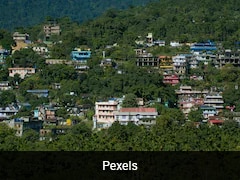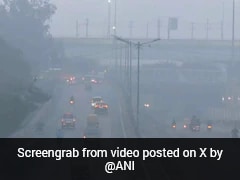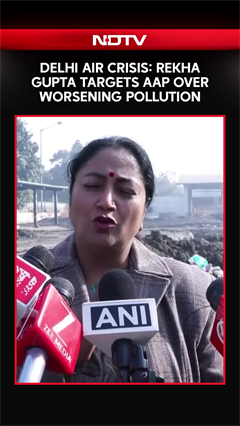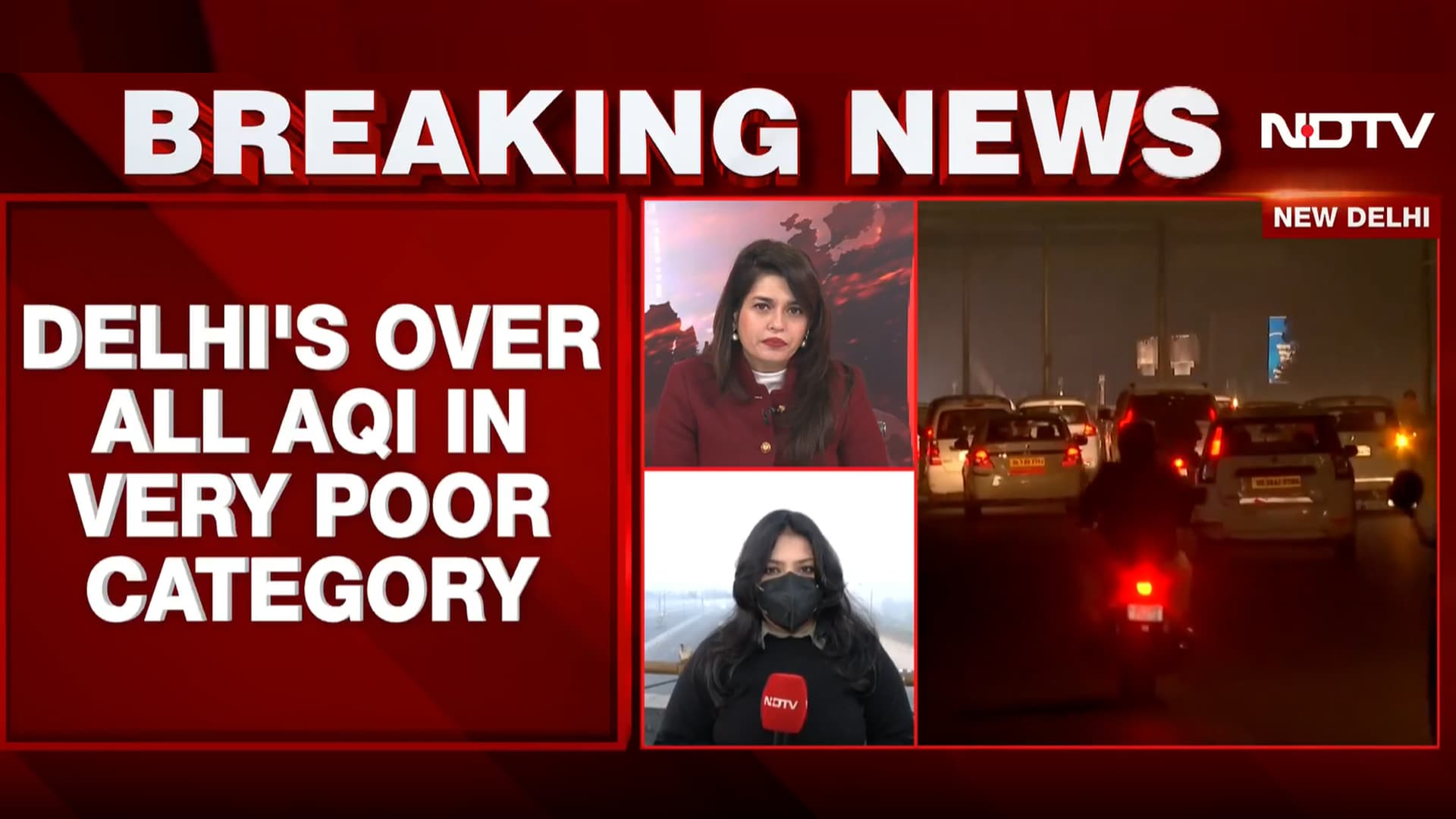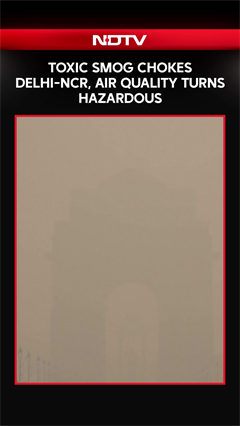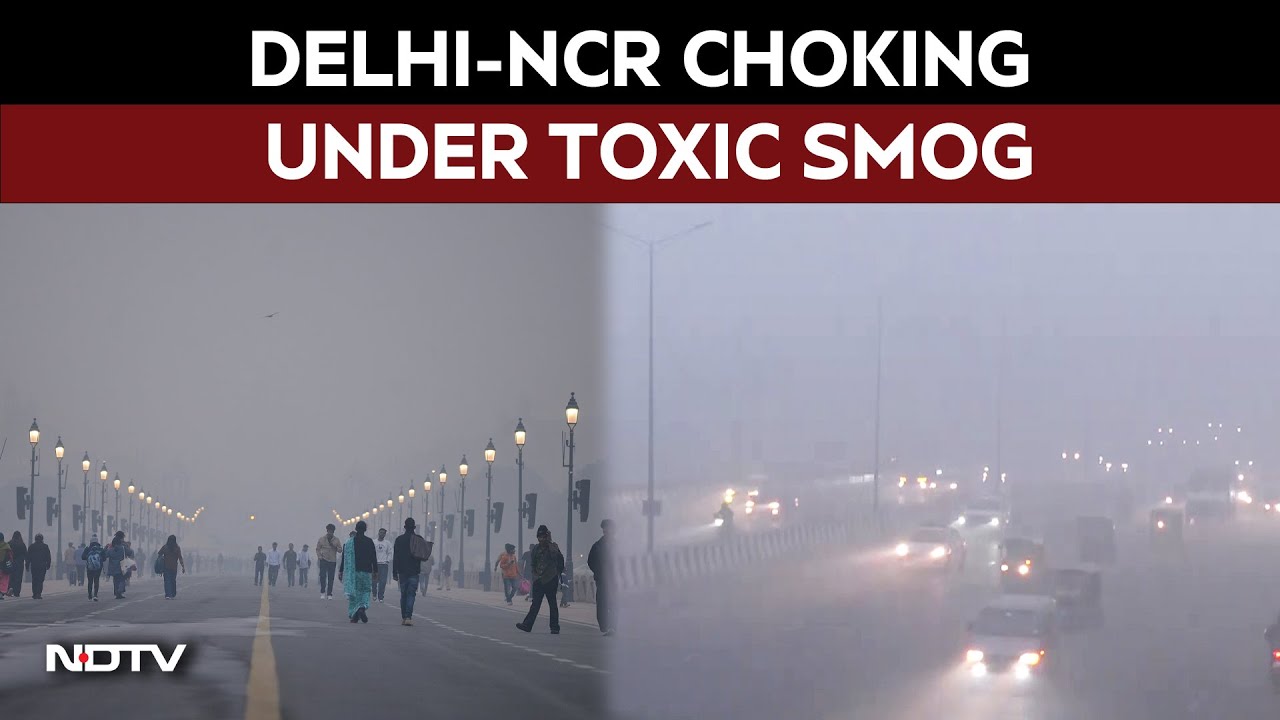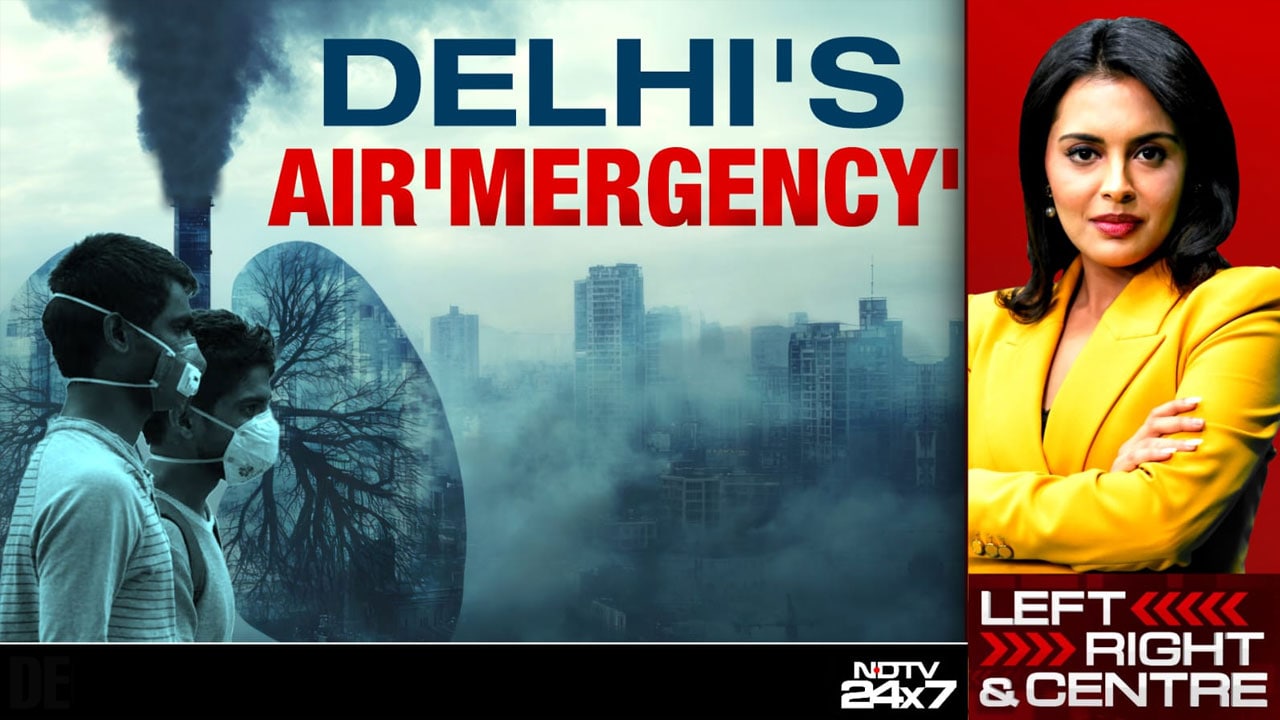- Home/
- Delhi's Nov PM 2.5 Level Reaches Highest Monthly Average In 8 Years: Report
Delhi's Nov PM 2.5 Level Reaches Highest Monthly Average In 8 Years: Report

Delhi's PM2.5 level in November reached its highest monthly average in eight years despite the implementation of GRAP measures, a recent report has revealed.
A report by the Centre for Research on Energy and Clean Air (CREA) highlighted that Delhi's PM2.5 concentration soared to an average of 249 micrograms per cubic metre in November -- the highest since 2017 -- despite enforcement of the Graded Response Action Plan (GRAP) and a decrease in stubble burning incidents.
In November 2016, the average PM2.5 level was recorded at 254 micrograms per cubic metre, the highest November reading, followed by 249 micrograms per cubic metre this year.
PM2.5 are fine particles with a diameter of 2.5 micrometres or less, about the width of a human hair. These are so small that these can penetrate deep into the lungs and even enter the bloodstream, posing significant health risks.
A report by the Centre for Research on Energy and Clean Air (CREA) highlighted that Delhi's PM2.5 concentration soared to an average of 249 micrograms per cubic metre this November, the highest since 2017, despite the enforcement of the GRAP and a decrease in stubble burning incidents.
The Commission for Air Quality Management in the National Capital Region and Adjoining Areas (CAQM) — a statutory body responsible for formulating strategies to combat pollution in the region — implements anti-pollution measures under the Graded Response Action Plan (GRAP).
In November 2016, the average PM2.5 level was recorded at 254 micrograms per cubic metre, the highest for the month, followed by 249 micrograms per cubic metre in 2024.
In comparison, the average was 241 micrograms per cubic metre in 2023, 181 micrograms per cubic metre in 2022, 238 micrograms per cubic metre in 2021, 214 micrograms per cubic metre in 2020, 204 micrograms per cubic metre in 2019, 200 micrograms per cubic metre in 2018, and 248 micrograms per cubic metre in 2017, the data said.
These fine particles pose significant health risks as they can penetrate deep into the lungs and enter the bloodstream.
The report highlights a concerning trend, with 159 out of 268 cities across India exceeding the National Ambient Air Quality Standards (NAAQS) for PM2.5 levels in November.
The NAAQS limit for PM2.5 is set at 60 µg/m³.
Speaking to PTI, Manoj Kumar, an analyst at CREA, said, "After 2017, this November saw a continuous eight-day stretch in the Severe category (PM2.5 >250 µg/m³) from November 13 to November 20. This was due to the delayed implementation of stricter GRAP stages (3 and 4), despite IITM predicting a Severe AQI category on November 13." Stubble burning contributed an average of 19 per cent to Delhi's PM2.5 levels in November, with the remaining pollution originating from year-round sources.
This underscores the need for a long-term, airshed-based strategy to address emissions from perennial sources, rather than relying solely on short-term GRAP measures.
The report, published by CREA, an independent research organisation, further revealed that Delhi experienced 20 days in the "Very Poor" category (121-250 µg/m³) and 10 days in the "Severe" category (>250 µg/m³) in November.
It added, "GRAP's on-ground impact remained questionable, as transportation contributed over 20 per cent to the city's PM2.5 levels, mirroring pre-GRAP periods." Meanwhile, Ghaziabad, Gurgaon, Noida, and other cities in the Delhi NCR region also struggled with severe pollution, with 28 NCR cities surpassing the NAAQS threshold.
According to CPCB data, Delhi's air quality dipped into the "Very Poor" category on October 30 and has remained between the "Very Poor" and "Severe" categories since then, as of December 1.
(Except for the headline, this story has not been edited by NDTV staff and is published from a syndicated feed.)
also read
Latest Stories
- Press Trust of India | Tuesday December 16, 2025 , Chandigarh
Punjab Chief Minister Bhagwant Mann on Monday questioned why there is a pollution crisis in the national capital despite no farm fires now.
- Written by Shreya Goswami | Tuesday December 16, 2025
Air pollution doesn't just harm the lungs. Doctors warn that chronic smog exposure triggers systemic inflammation, worsening joint pain and accelerating damage, especially in shoulders and hips.
- Edited by Nikhil Pandey | Tuesday December 16, 2025
Shillong's exceptionally low air pollution levels result from its highaltitude location, abundant greenery, limited industrial activity and active cleanliness initiatives, helping it rank among India's cities with the best air quality.
- Edited by Sahil Behl | Tuesday December 16, 2025
Delhi Schools In Online Mode: On December 15, the government withdrew this option and mandated that classes for nursery to Class 5 be conducted only in virtual mode.
- Asian News International | Tuesday December 16, 2025 , New Delhi
The National Capital Delhi continued to reel under hazardous air conditions on Tuesday as the city's overall AQI stood at 378 at around 8 am, placing it in the 'very poor' category, according to data from the Central Pollution Control Board.
................................ Advertisement ................................
Latest Videos
Opinion
Blog | Well Done, Delhi. You've Turned Lung Sacrifice Into A Badge Of HonourSaikat Kumar Bose
Monday November 10, 2025Till some years back, Delhiites would ask angry questions to those in power about the capitals annual tryst with toxic air. This has changed. Those in the driving seat dont see the need to answer now.
Opinion | Why Indians Have Just Given Up On Air Pollution CrisisTanushree Ganguly
Friday December 20, 2024While some may argue that people in Delhi are now more aware of air pollution than they were a decade back, my rebuttal would be that awareness does not mean that people are concerned.
Opinion | You Must Outrage Over Filthy Air More Than Once A YearJyoti Pande Lavakare
Tuesday December 10, 2024Delhi welcomed us with monsoon rains and mangos. We were home. Fast forward a couple of years, in the winter of 2012, I found myself in denial about something other parents, mostly expats, were calling toxic air.
Opinion | Delhi's Air Pollution Situation Is Like A Bad MarriageNishtha Gautam
Friday November 22, 2024On a good day, such as today, the AQI reading in Delhi is 407. We are jubilant at the sickly sunshine trickling through the slightly dissipated smog. At least its not 1600.
दिवाली... पराली... सियासी जुगाली!Ashwini kumar
Monday November 18, 2024दिल्ली-एनसीआर में प्रदूषण का समाधान तो आज तक मिला नहीं. हर साल चिंतित होकर हम-आप सांसों की तकलीफ के साथ-साथ दिल और ब्लड प्रेशर के मरीज भी क्यों बनें?





